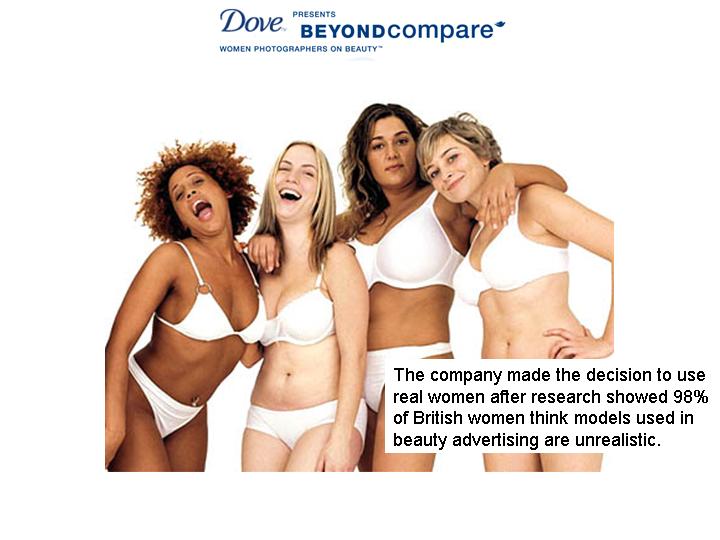The problem with this type of image construction is the result of unrealistic images, and the pretense that buying the products that advertisements promote will make us look like the models. Furthermore, it encourage us to idolize features and looks that are either impossible to achieve, or do not represent in any way the regular normal appearance of people, which then cause feelings of frustration, low self esteem, and inferiority, as people do not feel satisfied with the way they look.
Another problem with advertisement images is the social wrongs that they promote by being sexist, racist, and by showing unequal power hierarchies between men and women. Jean Kilbourne, an activist and critic of gender representation in advertising, provides critical observations in her films “Killing Us Softly”. Kilbourne made her first film in 1979, remade it in 1987 and keeps revisiting it to show that nothing much has changed.
According to Kilbourne, the advertisements reflect a pattern and a statement on what it means to be a woman in the American culture. Kilbourne points out that although people usually say that they don’t pay attention to ads, the average American is exposed to about 3,000 ads per day. In addition, advertising is the foundation of the mass media, selling not only products, but also values, images, and self concepts of normalcy. Kilbourne claims that the media tells us who we are and who we should be, and It tells us how women should look by showing the ideal female beauty. As a result women feel ashamed and guilty when they fail to achieve the ideal, and failing is inevitable because the ideal is based on flawlessness which doesn’t really exist. According to Kilbourne, advertisers even use computer generated images of women that don’t even exist by combining and assembling facial features from different pictures of women to create the perfect woman. Kilbourne stresses the fact that through advertisement images women’s bodies turn into objects, which promotes a culture climate in which there is wide spread and increased violence against women. Turning a human being into a “thing”, Kilbourne says, is the first step for justifying violence against that person. The same goes for racism and homophobia, by thinking of the person as less than human violence becomes inevitable. Women of color, for example, are shown dressed in animal skin and animal prints in advertisements which creates the message that these women are not fully human. In addition, over and over again, only one part of the woman’s body is used in advertisements, such as legs, breasts, headless bodies, etc, which promote the concept that women are seen as objects.
The following example is an ad for Dolce & Gabbana from Esquire which I found on http://loveyourbody.nowfoundation.org/offensiveads.html. As mentioned in the website, the ad depicts “a scene evoking a gang rape and reeking of violence against women”. The ad does a good job in getting the viewers’ attention by being provocative, and using beautiful models with sculpted bodies to exhibit the designers’ clothes. At the same time, it idolizes youth and beauty by showing thin and athletic models, and portrays an offensive sexist image of violence and men’s dominance over women.

While this trend is highly common and popular, alternative advertisement campaigns exist as well, although not so common. For example, Dove soap created campaigns showing real women instead of models. Such campaigns can assist in changing the traditional concept of women as sexual objects and creating a positive realistic depiction of women. By showing ordinary people, advertisers can create a better connection with the public. The public could then relate strongly to the images in the ads and feel better about themselves.

Picture was taken from http://aureliepercher.wordpress.com, webpage about women and ads.
Works Cited:
Hanson, Ralph. Mass communication : living in a media world. Washington, DC: CQ Press, 2011.
No comments:
Post a Comment
Note: Only a member of this blog may post a comment.